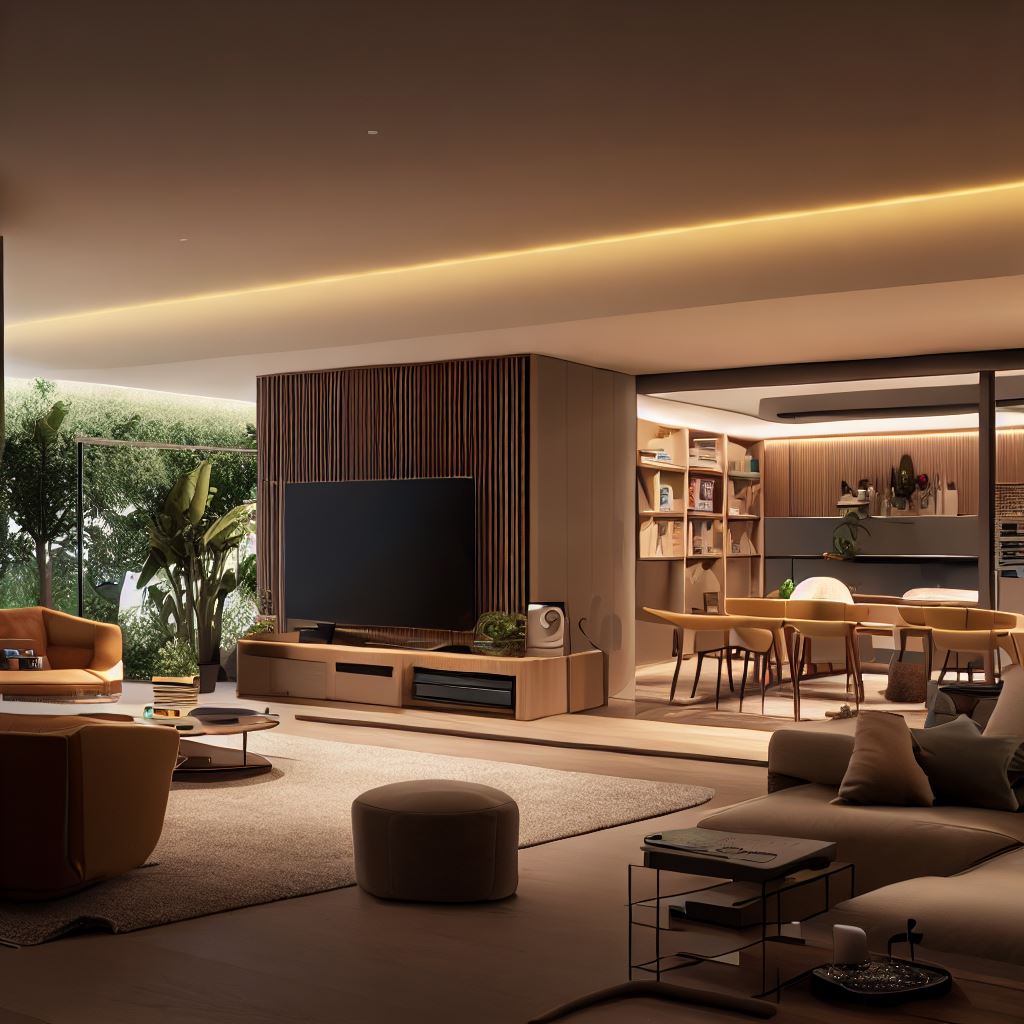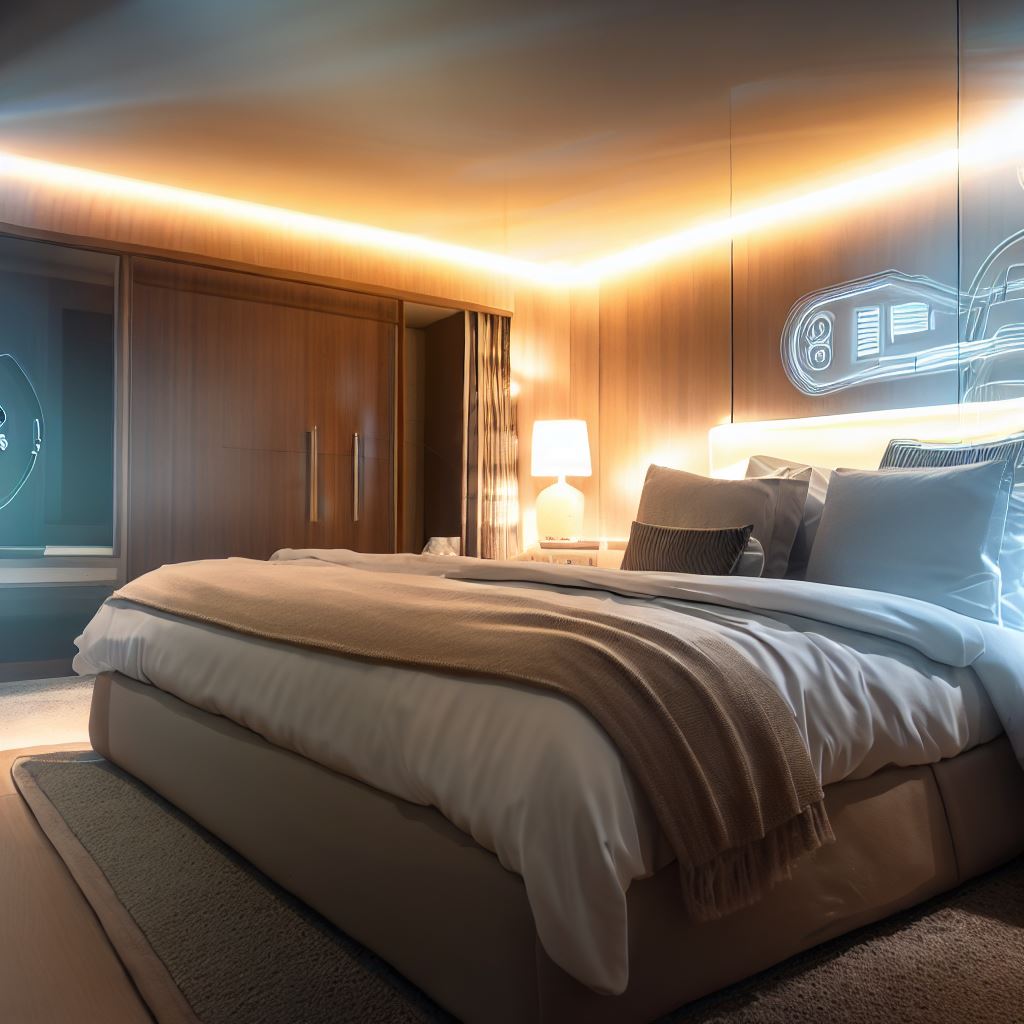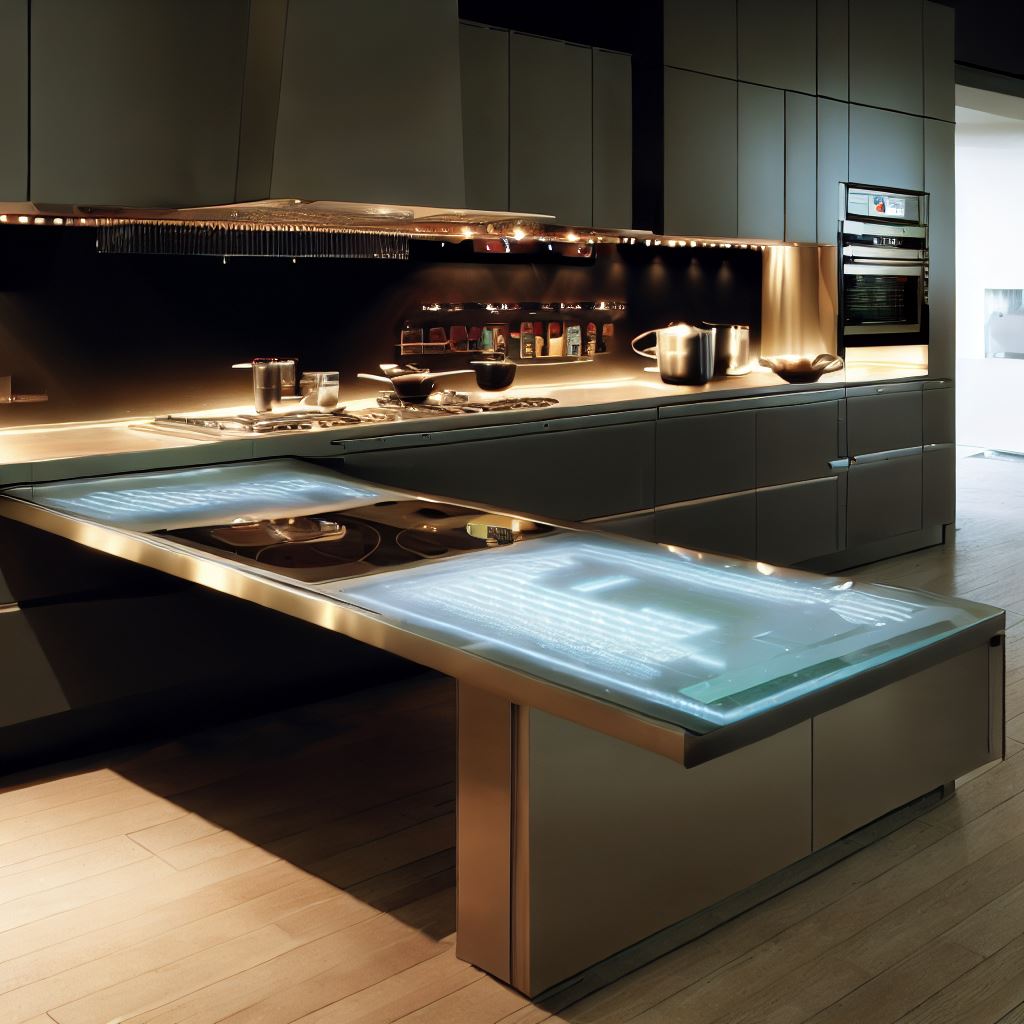Smart Home Design is rapidly becoming a popular trend. In todays’ digital age, our homes are transforming into more than just a physical space. Integrating smart technology into residential interiors is no longer a novelty or only what we see in futuristic movies. It’s here and is reshaping the way we live and interact within our living spaces. Our homes are becoming more connected and intelligent, which in turn brings the potential to enhance comfort, convenience and energy efficiency.
Welcome to the era of smart home design. An innovation where technology seamlessly blends with architectural aesthetics to create an elevated living experience.

The Evolution Of Smart Homes
The concept of smart homes dates back to science fiction, but today is a rapidly growing reality. The integration of smart technology in our homes has gained momentum over the years due to increased connectivity and our desire for greater control over our living environments.
Imagine waking up to a home that has already adjusted the temperature to your liking and brewed your morning coffee. Or walking into a room, and the light adjusts to your preference, or your favourite song begins to play. Smart home technology has become an essential component in our lives that contributes to a more efficient and enjoyable lifestyle. It can bring an unparalleled level of convenience to our daily lives.
Intuitive User Experience
This progression of technology enables us to control various aspects of our homes efficiently and even remotely. All of which can learn and adapt to our preferences. We can easily manage and control things such as security systems, lighting, thermostats and entertainment systems. From voice commands to mobile apps, controlling our homes becomes effortless, regardless of our location.
Seamless Design Integration
A significant challenge in smart home design is successfully maintaining the aesthetics of a space while effectively integrating technology. It’s all about getting the correct balance between functionality and aesthetics.
Concealing wires, sensors and devices within the architecture is a key focus in contemporary smart home design. Ensuring the integration of technology blends seamlessly into existing décor requires careful planning and consideration.
Interior Designers are crafting innovative ways to ensure a harmonious and functional environment. Integrating artwork that doubles as interactive screens, and mirrors with built-in displays both represent successfully blending technology with aesthetics.
Designing spaces with smart home design in mind from the outset allows for better concealment of devices and wires. Technology becomes a seamless part of the overall plan, creating a clean and uncluttered environment from the get-go.

Security At Home
Of course, security is a top priority in any home and todays’ technology has changed the way we approach it. Smart security systems incorporate everything from video doorbells and surveillance cameras to motion sensors and smart locks. This amazing technology can provide real-time alerts and remote monitoring through using our smartphones. No matter where you are you can ensure the safety of your home through the tap of a screen.
Energy Efficiency And Sustainability
The integration of smart technology into your home goes beyond just convenience. It goes hand-in-hand with energy efficiency and sustainability. Smart thermostats can learn the optimal temperature settings for different times of the day or night. Adjusting temperatures accordingly can dramatically reduce energy consumption and wastage. Automated blinds can open and close based on natural light detection, regulating indoor temperatures naturally.
Homeowners can also contribute to a greener future by using smart meters to monitor and manage their energy consumption. By optimizing energy usage, homeowners can reduce energy bills as well as their environmental footprint.
Smart Home Design Challenges And Solutions
While there are many benefits to smart home design, there are also some challenges that come with this transformation. Privacy concerns and data security are issues that pose major concerns. As homes become more connected, safe-guarding personal information and ensuring unauthorised access is a top priority.
Investing in reliable, reputable brands, keeping software updated and using strong passwords will all help to reduce any risks.
The Future Of Smart Technology
As technology continues to evolve at high speed, so does the possibilities for integrating smart technology into residential interiors.
Think kitchen benchtops that display interactive recipe instructions as you cook. Windows that automatically tint to optimize natural light. The ideas are endless and can provide even greater convenience and comfort for homeowners.

Opting for systems that can adapt to new innovations without requiring a refit of your existing setup will help keep your home up-to-date with the latest advancements. Which, of course, will prolong its relevance and functionality.
Smart home design demonstrates our ingenuity and desire to create functional living spaces to meet our needs and wants. Integrating technology into our homes not only enhances efficiency and convenience but also shapes the way we perceive and interact with our living environments.
Getting the right balance between technology and aesthetics is key to creating a harmonious environment. And one that embodies the way of modern living.





Leave A Comment Or Ask A Question